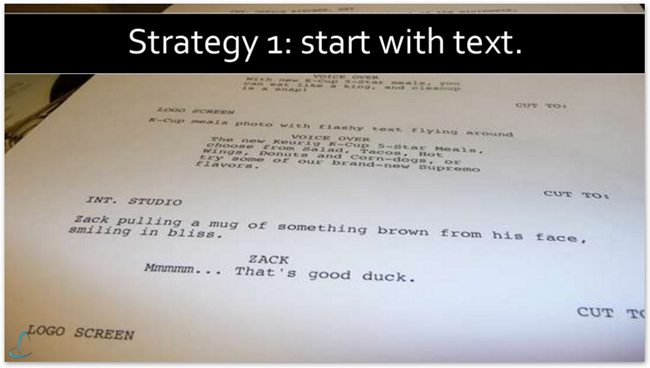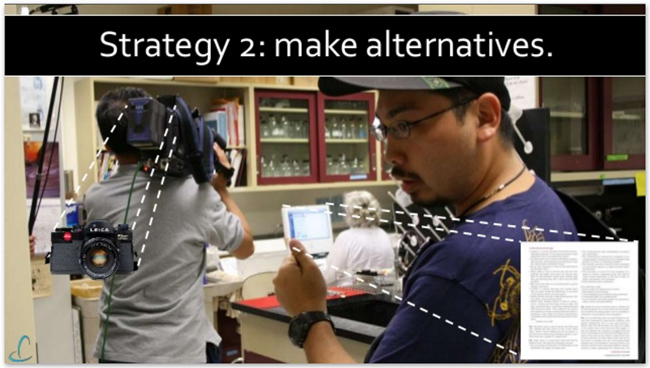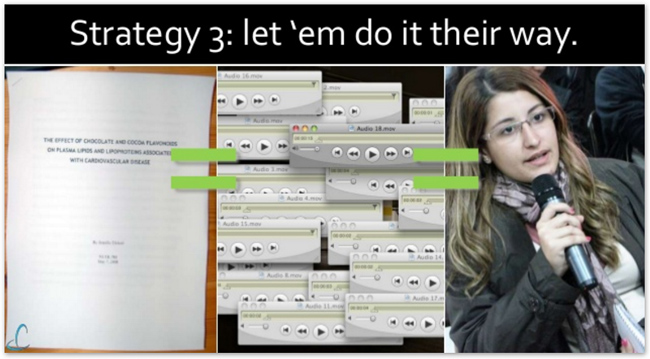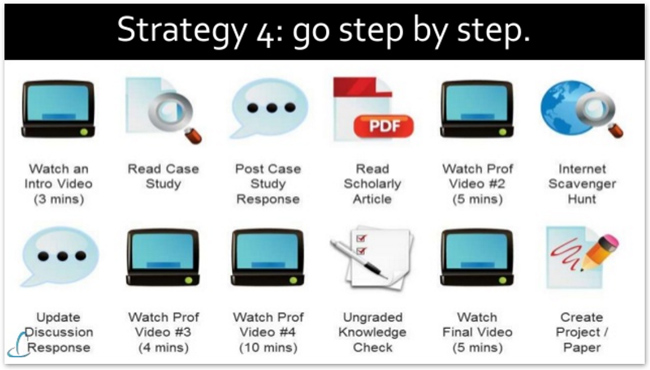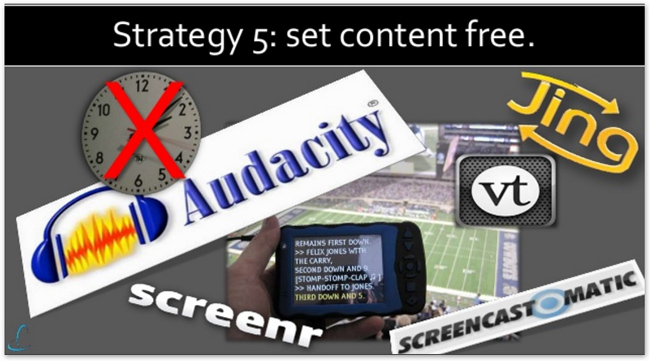Top 5 Tips for Getting Colleagues to Adopt UDL in eLearning
Updated: June 3, 2019
Need help encouraging your colleagues to start implementing universal design for learning (UDL) in the courses they teach? Dr. Thomas Tobin, author and speaker on quality in distance education, is an expert on the subject. He suggests referencing the following five-step approach to show your colleagues how UDL can benefit both teachers and students.
Watch the full webinar with Thomas Tobin, Tips for Getting Your Colleagues to Adopt Universal Design for Learning, or read on for a summary of his five top tips.
1. Start with Text
If you have a script or notes for a lecture, you already have an alternative text-based version of your content. This comes in handy if you create a video or podcast from it.
Now, some professors don’t like starting with text. Some people like to step in front of the camera and just go, and then make the transcript later. Let them do that.
But throughout your design process, starting with text is a good foundation.
2. Make Alternatives
Make alternative formats of course content available.
For example, in the photo above we have a professor in her lab looking at a screen with the research that she has just published. And we have two students in the lab who are videotaping her looking at her screen and talking about her research. And we have one of the students giving the thumbs up because we can take that research and turn that into a PDF for accessibility purposes.
“For folks who have challenges processing information, it’s much easier to look at a series of still images than to decode video information.”
We can also take the content from the video and turn that into a series of still images with text that goes along with them. For folks who have challenges processing information, it’s much easier to look at a series of still images than to decode video information.
By the way, that’s true not just for people with disabilities, but for most of us. That’s why comic books are really effective.
3. Give Students a Choice
Students thrive when they can learn in the medium that works best for them. Giving them options for assignments in different formats lets them play to their strengths.
For example, you might ask your students to give you either a three-page paper, a three-minute podcast, or a three-minute video.
You might ask, “Well, how can I grade a video and a three page paper? They’re not the same.”
That’s when we get back to measurable objectives for the assignment.
“Where you can offer choice, it’s always in your best interest to do so.
If the objectives for the assignment are the same in both cases, you should be able to spot evidence of meeting the objectives well, poorly, or not at all in any kind of assignment that studnts give you.
Even if it’s a writing course, you might suggest that students could write a draft as an audio. Speak their topic sentences. Speak their evidence, details, and examples, etc. The write the final draft.
If you need to get faculty buy-in here, think through the process by which students accomplish the end goal and focus on that. Are there steps in that process where we can provide them with choices?
Where you can offer choice, it’s always in your best interest to do so.
4. Go Step by Step
Allow faculty to chunk up the content in their courses.
Professors are actually really good at doing this in our face-to-face environments if they use the 10 to 2 rule; for every 10 minutes of getting information, there should be about two minutes of responding or doing something else.
Breaking up lessons into smaller parts means that:
- It’s easier to make those parts accessible, and
- By design, learners have a template to follow. ‘Do this, then that, then the other thing, then the next thing.’
5. Set Content Free
Let’s set content free. And I mean free in two different ways.
Free from the Clock
“Repetition really helps when people are studying, and it also helps with students with disabilities.”
By hosting materials for courses and other interactions with students in an online environment, in a place that’s accessible 24/7, we no longer have to be in the same place at the same time.
What’s nice about that is students can look at things over and over. Repetition really helps when people are studying, and it also helps with students with disabilities.
Free from Format
Not all formats for course materials work on mobile devices. Word document, PowerPoint presentations, specialty math software – none of that will work if you open it on your iPhone.
Luckily, there’s screen recording software like Jing or Screener. There’s audio recording software like VoiceThread that outputs information in a video format that you can host on Vimeo or YouTube. And by posting on those places, all you need is an internet browser or the free YouTube player, for instance. And everybody’s got that on their phones.
So even if you’re demonstrating something in Maple or SPSS or PowerPoint, by doing a screen recording and hosting that video online, you’ve just made it more accessible.
Even better: you can add closed captions to those videos. And those captions can be searchable, which means that even your students who don’t have disabilities can search for keywords to find materials on specific topics. And then they can use those as study tools.
Parting Advice about UDL for eLearning
Aim for progress, not perfection. Change takes time.
Have a plan to apply Universal Design for Learning in the places where it makes the greatest impact. And then continue to support people with disabilities with specific accommodations where they’re necessary.
—
To learn more about making your course content accessible, download:
5 Web Accessibility Resources Every College Needs
This post was previously published by Emily Griffin on February 5, 2016 and has since been updated.



